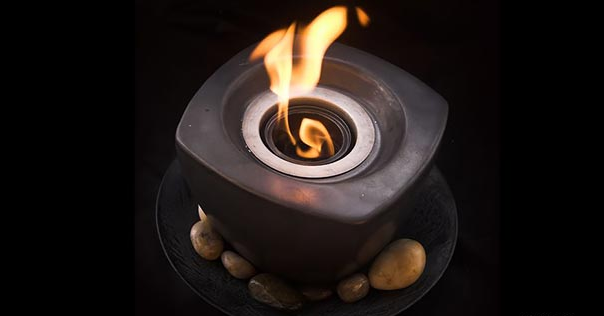Gel fuel is a fuel alternative that is becoming increasingly popular because it is safer and more stable to handle than traditional liquid fuels.
You can make this amazing product at home to store for those moments when the power goes out and you need light.
How to Make Gel Fuel with Soy Wax
If you choose to use the soy wax, just follow some simply steps:
Melt 6 ounces of soy wax in a pan.
Add 1/2 cup 70-99% isopropyl alcohol (higher percentage is better if you can find it) and stir until completely combined.
Pour the mixture into 6 soup cans or pet food cans until they’re about 3/4 of the way full then add a wick that goes to the bottom of the gel fuel.
Cool in the fridge for several hours or overnight, and then it’s ready to use.
If you’d rather store in quantity, you can put it in gallon jugs. Just make sure that you label it well so that nobody mistakes it for water or something else and store it away from children and pets.
How to Make Gel Fuel with Calcium Acetate
If you’d like to use calcium acetate, which is actually the more preferred method, you can either buy it or make it yourself.
Making calcium acetate at home: You’ll need crushed chalk (calcium carbonate) and white vinegar (acetic acid). Combine 4 parts vinegar to 1 part chalk and the result will be carbon dioxide, which will evaporate, and calcium acetate and water, both of which will remain. This process smells like rotten eggs, just so you know.
You’ll be left with a solid on the bottom and a liquid on the top. It’s the solid that you want, though you’ll need some of the liquid to make the gel. You’ll need to evaporate 1/2-2/3 of the water out of the solution.
You can do it by placing the solution in the oven for a few hours, sitting it in the sun, or carefully evaporating it on “low” on the stove top. You can also strain it using a cheesecloth or coffee filter.
Making the gel fuel: Combine 9 parts isopropyl alcohol and 1 part calcium acetate. Stir together and it will instantly begin to gel. Put it in the empty soup cans as described above. Add some water in if you’re using solid calcium acetate that you bought. The ratio, regardless of whether you’re making your own or adding water to store-bought, is about 1 part water to 3 parts calcium acetate.
In the event of a blackout, it is a lot easier and safer to work with gel fuel than traditional liquid fuel.
Because of that, you should either buy or make a few canisters to keep in your home, bug-out bag and survival kit.
To learn more about gel fuel, including more alternatives, visit The Prepper Dome.

@[100000029202158:2048:Chris Bloodworth]
@[100000443243426:2048:Ashley Dunbar]
@[100000124222667:2048:Charles Neil Prestwood] @[184104330:2048:Stephanie Holmes Watkins] @[1823320764:2048:Jace Hargrove]
Yay, napalm sticks to kids!
@[100000707898691:2048:Bill Bickford]
@[100000116047321:2048:Melanie Kimbra Jeffries]
Yes it does and burns the crap outta them.